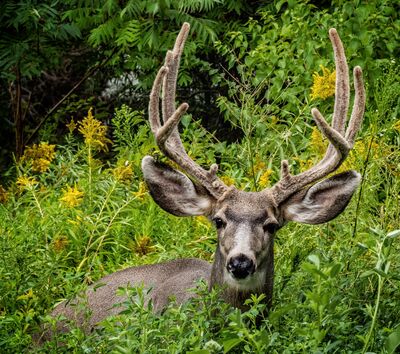Check out Film Photography section of our forum.
Stop Using ISO100!!…Increase Your ISO For Crisper Landscape Photos
Jul 28, 2021 07:16:51 #
I watched a YouTube video by Mark Denney with the above title.
Most landscape photographers are advised to use their lowest ISO, usually 100, when shooting on a tripod. Indeed, that is exactly what I normally do.
In this video, Mr. Denney suggests using a higher ISO in two cases, moving water, and to freeze blowing leaves.
He recommends first doing a test to determine what is the highest ISO your camera can shoot at without introducing noise.
I took these photos yesterday at Freeman’s Mill Park in Georgia. It had rained so the waterfalls were different from my last post.
This trial was not exhaustive and was not simply taking a bunch of photos from the same perspective. It is 2 photos at ISO 100 and 2 photos at ISO 400.
I used a Nikon 18-140 lens on a Nikon D7500. I used a circular polarizing filter.
Do any of you use a higher ISO for landscape photos on a tripod?
Most landscape photographers are advised to use their lowest ISO, usually 100, when shooting on a tripod. Indeed, that is exactly what I normally do.
In this video, Mr. Denney suggests using a higher ISO in two cases, moving water, and to freeze blowing leaves.
He recommends first doing a test to determine what is the highest ISO your camera can shoot at without introducing noise.
I took these photos yesterday at Freeman’s Mill Park in Georgia. It had rained so the waterfalls were different from my last post.
This trial was not exhaustive and was not simply taking a bunch of photos from the same perspective. It is 2 photos at ISO 100 and 2 photos at ISO 400.
I used a Nikon 18-140 lens on a Nikon D7500. I used a circular polarizing filter.
Do any of you use a higher ISO for landscape photos on a tripod?
1) f/11, 1/2, ISO 100, 35mm
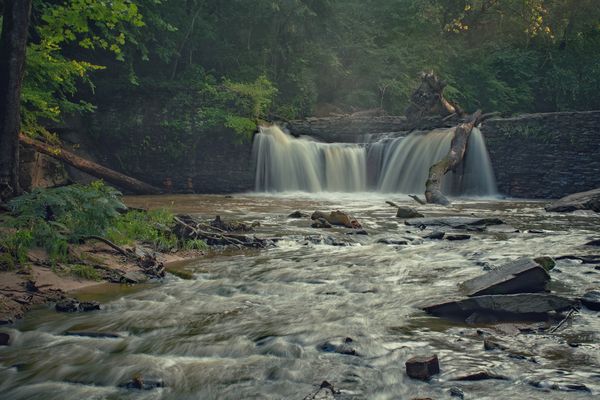
(Download)
2) f/11, 1/8, ISO 400, 24mm
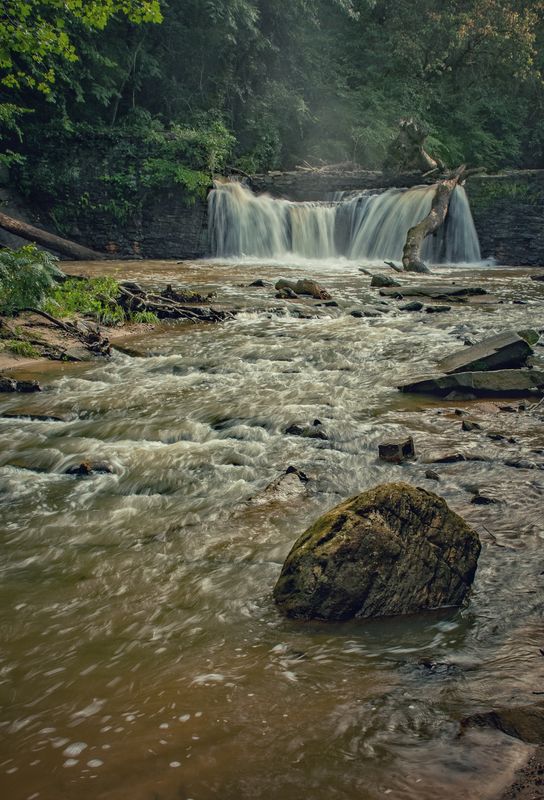
(Download)
3) f/11, 1/2, ISO 100, 40mm
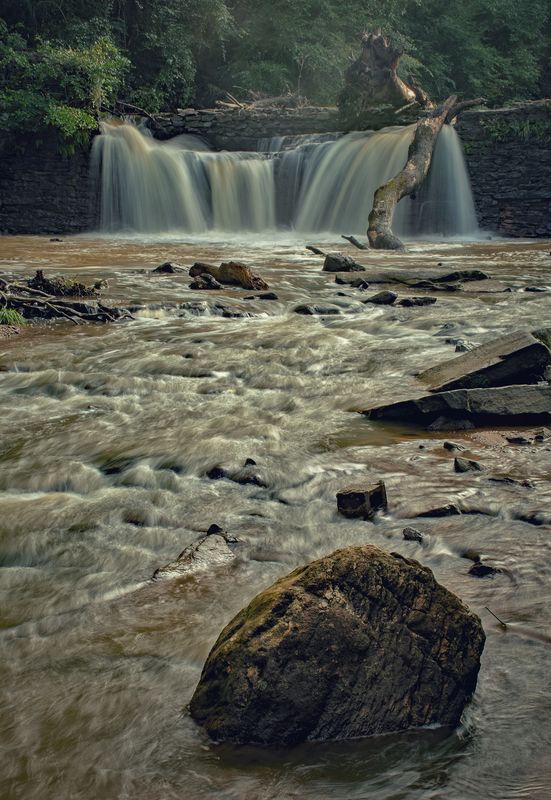
(Download)
4) f/11, 1/13, ISO 400, 70mm
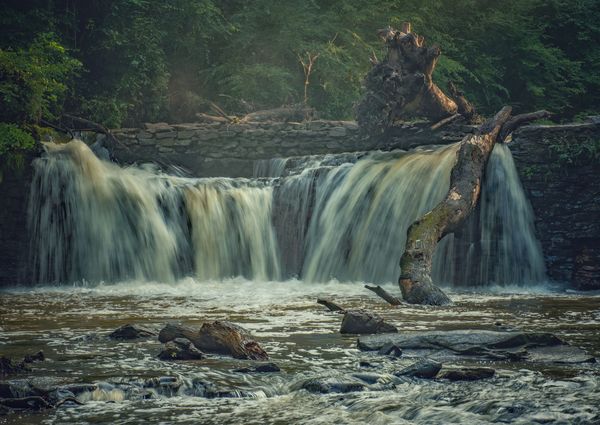
(Download)
Jul 28, 2021 07:26:50 #
In the same vein of looking critically at your own results from your exposure decisions, I think there's more 'upside' to not using too small apertures. Over and over we hear from experienced photographers referencing their small (say f/22) apertures for great sharpness and depth of field. Alas, if they did a similar analysis and comparison of their results from say f/11 to their default f/22, they'd see in the 1:1 pixel-level details they are in fact getting less sharp images beyond a point of diminished returns beyond f/11. Their experience with film-based equipment is not translating to success in digital landscape photography.
Jul 28, 2021 07:27:47 #
whfowle
Loc: Tampa first, now Albuquerque
If you wanted to perform a comparison of ISO's for a change in noise, why did you change the focal length in every picture? It is obvious that a higher ISO will require a faster shutter speed resulting in more texture in the moving water.
Check out Close Up Photography section of our forum.
Jul 28, 2021 07:41:15 #
This might have been a valuable treatise. However, changing anything other than ISO nullifies the study.
--Bob
--Bob
deanfl wrote:
I watched a YouTube video by Mark Denney with the ... (show quote)
Jul 28, 2021 07:42:44 #
whfowle brings up and good point. Of all the pics though #3 looks best. Hardf to tell about the ISO with the focal length changes.
Jul 28, 2021 07:43:51 #
I usually use an ISO of 64 even roaming around at night.
I think that noise is introduced at all ISO settings and increasing at each higher setting.
For instance; you may find more noise at ISO 100 than at ISO 64 - both of which would be acceptable and easily cleaned up.
I don't see the need to move ISO as long as you can get the shutter and aperture required for your anticipated results.
I will follow this thread to see what others have to add.
I think that noise is introduced at all ISO settings and increasing at each higher setting.
For instance; you may find more noise at ISO 100 than at ISO 64 - both of which would be acceptable and easily cleaned up.
I don't see the need to move ISO as long as you can get the shutter and aperture required for your anticipated results.
I will follow this thread to see what others have to add.
Jul 28, 2021 07:49:18 #
whfowle wrote:
If you wanted to perform a comparison of ISO's for a change in noise, why did you change the focal length in every picture? It is obvious that a higher ISO will require a faster shutter speed resulting in more texture in the moving water.
In Mr. Denney’s video, to test his camera’s ISO capabilities, he shot his Christmas tree lights on a tripod, in a succession of photos. I didn’t do such a test. I have an idea from previous use on how my camera will handle noise at different ISO numbers.
This post gave me something different to try out at a local waterfall. I used different focal lengths to try to make the post more interesting for myself and hopefully the viewer.
Jul 28, 2021 07:58:05 #
If one is going to compare ISO; ƒ-stop; speed, etc., using different images.
DON'T CHANGE THE FIELD OF VIEW WITH EACH IMAGE!
Keep EVERYTHING else a CONSTANT!
Couldn't ISO result variations also depend on the individual camera characteristics?
DON'T CHANGE THE FIELD OF VIEW WITH EACH IMAGE!
Keep EVERYTHING else a CONSTANT!
Couldn't ISO result variations also depend on the individual camera characteristics?
Jul 28, 2021 08:14:11 #
I focused on the leaves on the far right of your ISO 100 shot and these leaves are the clearest of all your ISO's. Of course it could be a focus issue with your ISO 400 shots , however, if your focus was right on in all your shots the leaves are clear in your ISO 100 shot.
Jul 28, 2021 08:16:37 #
StanMac
Loc: Tennessee
rmalarz wrote:
This might have been a valuable treatise. However, changing anything other than ISO nullifies the study.
--Bob
--Bob
👍👍
Stan
Jul 28, 2021 08:23:17 #
Sidwalkastronomy
Loc: New Jersey Shore
I think iso up to 800 are pretty safe.Havent done that test but got it from Canon tech support
Check out Infrared Photography section of our forum.
Jul 28, 2021 08:30:57 #
rmalarz wrote:
This might have been a valuable treatise. However, changing anything other than ISO nullifies the study.
--Bob
--Bob



Jul 28, 2021 08:51:05 #
I see there have been several responses while I was preparing an answer to a previous post. I will try to clarify my thinking about my post.
This post was designed for landscape photographers to consider using an ISO above 100 while shooting on a tripod. I seldom, if ever, did before.
I posted 4 photos(this is the photo gallery). I purposely did not try to do a “study”. Few people are ever happy with how these are presented.
I find it interesting that not a single person has commented about whether they liked or didn’t like any one photo. I thought that was the reason we took photos. And if you don’t like any of the photos that is OK too. I still prefer the ones shot at ISO 100.
This post was designed for landscape photographers to consider using an ISO above 100 while shooting on a tripod. I seldom, if ever, did before.
I posted 4 photos(this is the photo gallery). I purposely did not try to do a “study”. Few people are ever happy with how these are presented.
I find it interesting that not a single person has commented about whether they liked or didn’t like any one photo. I thought that was the reason we took photos. And if you don’t like any of the photos that is OK too. I still prefer the ones shot at ISO 100.
Jul 28, 2021 08:55:15 #
deanfl wrote:
...
...
I find it interesting that not a single person has commented about whether they liked or didn’t like any one photo. I thought that was the reason we took photos. And if you don’t like any of the photos that is OK too. I still prefer the ones shot at ISO 100.
...
I find it interesting that not a single person has commented about whether they liked or didn’t like any one photo. I thought that was the reason we took photos. And if you don’t like any of the photos that is OK too. I still prefer the ones shot at ISO 100.
I thought it was an attempt at a tutorial, not a gallery display.

Jul 28, 2021 08:57:02 #
deanfl wrote:
...
...
... I purposely did not try to do a “study”. Few people are ever happy with how these are presented.
...
...
... I purposely did not try to do a “study”. Few people are ever happy with how these are presented.
...
Wasn't that the whole point? A comparison, a "study"?
If you want to reply, then register here. Registration is free and your account is created instantly, so you can post right away.
Check out Wedding Photography section of our forum.
